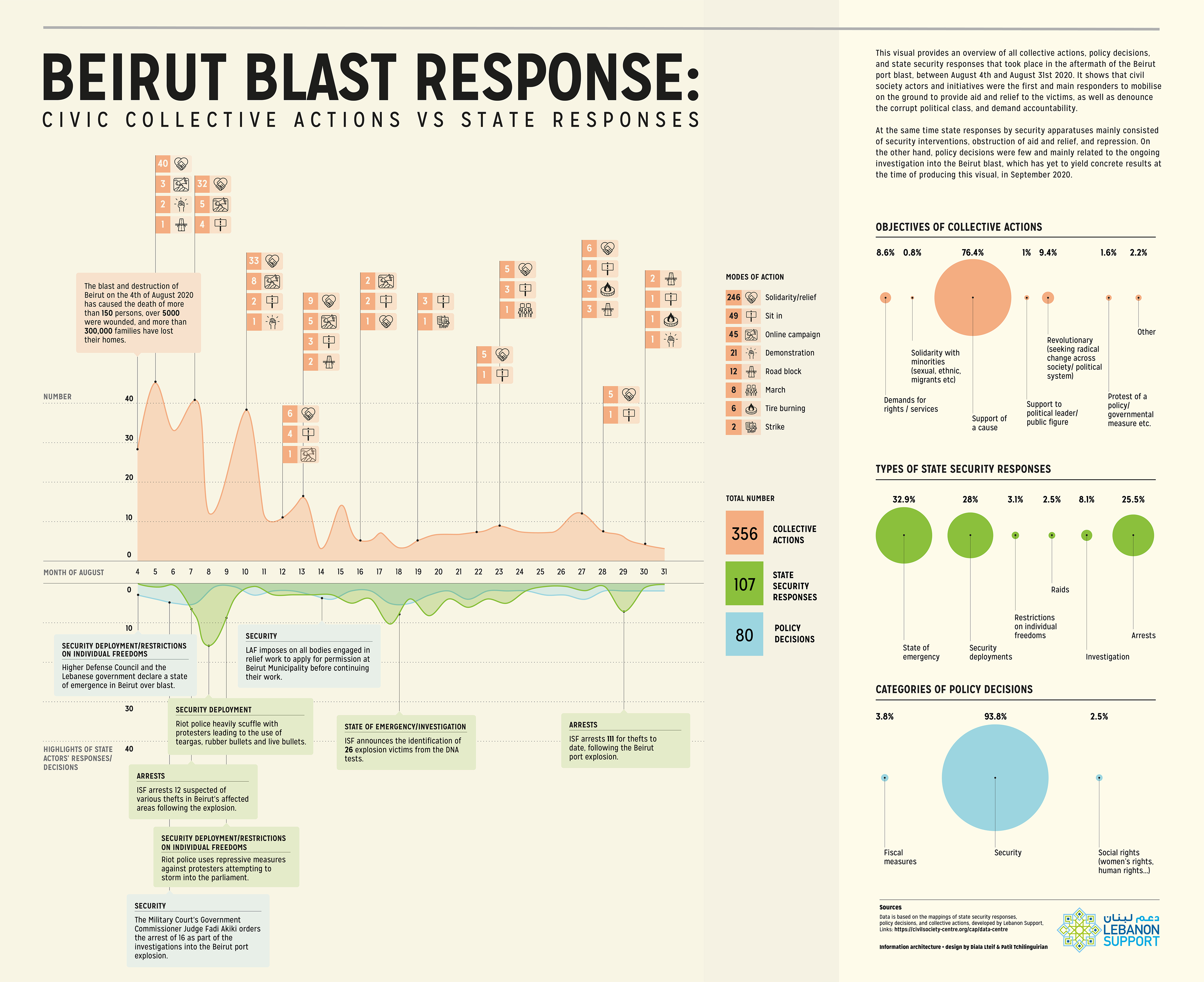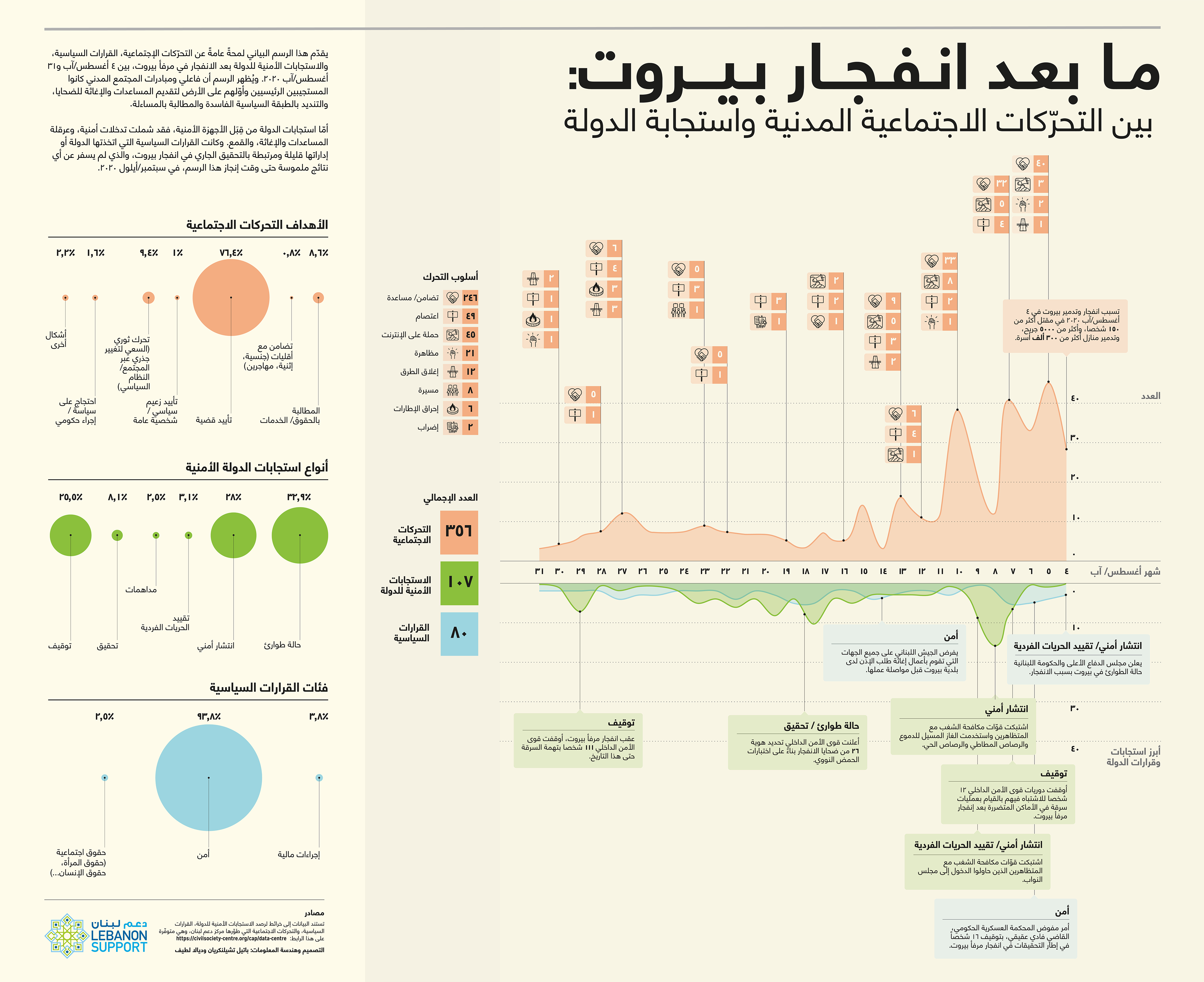Beirut blast response: Civic Collective Actions VS State Responses - ما بعد انفجار بيروت: بين التحرّكات الاجتماعية المدنية واستجابة الدولة
The blast and destruction of Beirut on the 4th of August 2020 has caused the death of more than 200 persons, over 6500 were wounded, and more than 300,000 families have lost their homes.
This visual provides an overview of all collective actions, policy decisions, and state security responses that took place in the aftermath of the Beirut port blast, between August 4th and August 31st 2020. It highlights the dynamism of civic collective actions in comparison to the slow response of the state, which focused mainly on maintaining a state of emergency, security deployments, violent repression of protesters demanding accountability, and arrests. Policy decisions were few, and mainly related to the ongoing investigation into the Beirut blast (which has yet to yield concrete results at the time of publishing this visual in October 2020). The majority of collective actions during that period (246 out of 356) consisted of solidarity and relief aid to victims, with 26 protests demanding accountability over the explosion.
This reiterates how local and national civic initiatives (whether informal collectives or organisations) are the first and main responders mobilising on the ground and providing aid and relief following a humanitarian crisis.
تسبب انفجار وتدمير بيروت في ٤ أغسطس/آب ٢٠٢٠ في مقتل أكثر من ٢٠٠ شخصا، وأكثر من ٦٥٠٠ جريح، وتدمير منازل أكثر من ٣٠٠ ألف أسرة.
يقدّم هذا الرسم البياني لمحةً عامةً عن التحرّكات الإجتماعية، القرارات السياسية، والاستجابات الأمنية للدولة بعد الانفجار في مرفأ بيروت، بين ٤ أغسطس/آب و٣١ أغسطس/آب ٢٠٢٠. وهو يسلّط الضوء على ديناميكية التحرّكات الاجتماعية المدنية مقارنةً باستجابة الدولة البطيئة، والتي ركزّت على إقامة حالة الطوارئ، والانتشار الأمني، وقمع المحتجين الذين يطالبون بالمساءلة، والاعتقالات. وكانت القرارات السياسية قليلة ومرتبطة بالتحقيقات الجارية في انفجار بيروت (الذي لم يسفر بعد عن نتائج ملموسة وقت نشر هذا الرسم البياني في أكتوبر/تشرين الأول ٢٠٢٠). ركزت غالبية التحركات الاجتماعية خلال هذه الفترة (٢٤٦ من ٣٥٦) على تقديم التضامن/المساعدة للمتضررين، بالإضافة إلى ٢٦ احتجاجاً للمطالبة بالمساءلة حول الانفجار.
وهذا يؤكد من جديد أن المبادرات المدنية المحلية والوطنية (سواء كانت مجموعات غير رسمية أو منظمات) هي أول المستجيبين على الأرض لتقديم المساعدات والإغاثة في أعقاب أزمة إنسانية.



